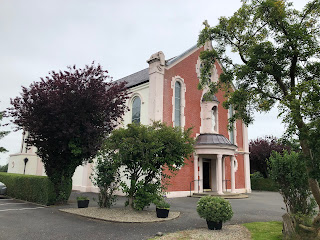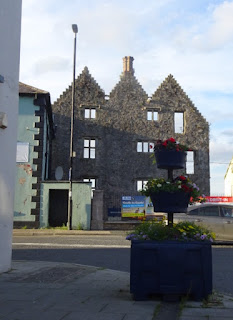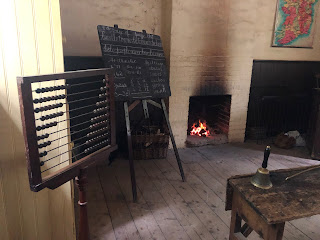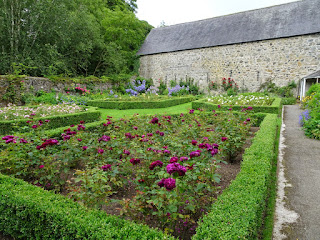Today offered a bit of a different twist from the average tourist adventure. This morning, we headed to Strabane to mass at Sacred Heart Church.
And what a glorious event that was. As a bit of a background story, let me back up two years, when the pandemic was in full force and churches were on complete lockdown. One Sunday morning, I stumbled upon Mass being livestreamed via the Leckpatrick webcam. Marty and I watched it in its entirety on our television at home. I recall how taken we both were with Father Sweeney's homily. We decided to get up the next Sunday to watch, again, at 6:30 am. Once again, we felt blessed to have found this man, as his homilies offered an insight which neither one of us had experienced in all of our years of attending weekly mass. One thing led to another, and I was marking my calendar for any possible special programs that he offered in addition to weekly mass.
Time passed, and we began to attend locally again, but we still continued to rise in time to watch Fr. Sweeney at 6:30 am.
So, when I planned this trip, I felt that it was the perfect opportunity to meet this man whom we both had found so insightful. And, this morning was that day. It felt surreal to sit in the pew in person rather than looking down from above. The first thing I noticed was the array of flowers in the church. In all the time I watched, I never saw such a display. It seems there was a wedding yesterday, and the mother of the bride is a florist.
As an added bonus, the old church had a full choir in attendance, which is something the parish has been lacking since Covid hit. Apparently a choir group asked Fr. Sweeney just yesterday, if they could sing at today's mass, and how fortunate for us that they did! The sound of their melodic voices echoing through the confines of the church only enhanced the experience that much more.
And, you can only imagine our surprise, when the priest had a woman present us with a special gift, and thank us for following the church on the webcam all of these years. We were there to thank THEM, and here they were, offering us thanks for being devoted watchers.
We were sure to get a photo with Fr Sweeney.
And here is the lovely gift that we received:
It is a Belleek Porcelain St. Brigid Cross, made in a nearby village.
I am completely unfamiliar with this beautiful creation, and I would certainly appreciate any insight that any of my readers might offer regarding the story behind this unique gift. But honestly, how could I NOT feel blessed at receiving such special attention? Obviously, the Irish can certainly make us feel welcome.
After mass, we were invited to chat with Fr over a cup of tea for a little while, then we headed out back on the highway, this time to a National Trust site called The Argory.
Upon entry through the front door, one can't help but be awed by this free standing staircase, which, quite honestly, was the highlight of the home.
The interior rooms held quite a collection of eclectic items that the family had collected over the years, and, unfortunately, it gave quite a cluttered look to the place, in my opinion.
Some of the unique items inside were a pipe organ, that was set up like a player piano. There was a giant roll that nested into the back of the instrument that plays various tunes on its own. The volunteer told us that the only downfall is that it is very loud.
She also pointed out this very rare and unusual piece that is Dutch. I can't recall the details, but she said that it was, by far, the most valuable item on the premises, but that the National Trust cannot determine just when it had been acquired. It remains to be a mystery.









































































